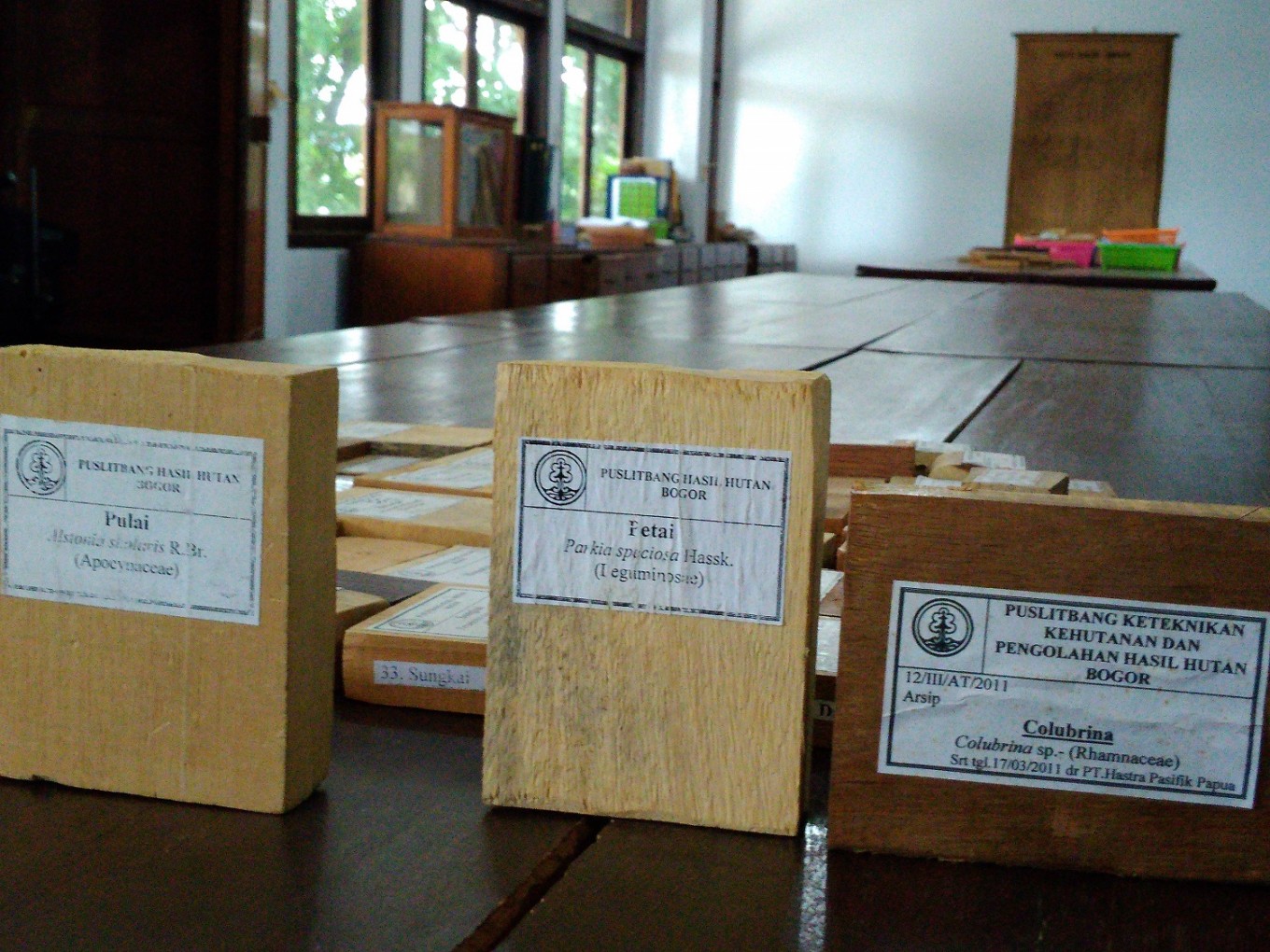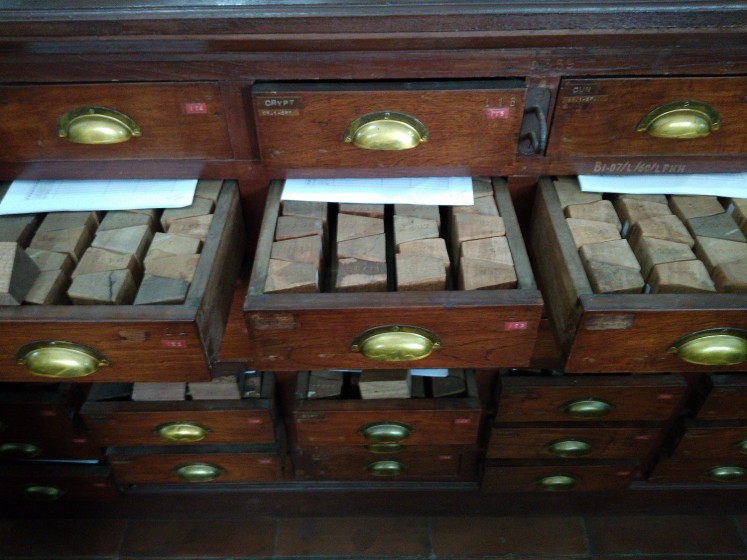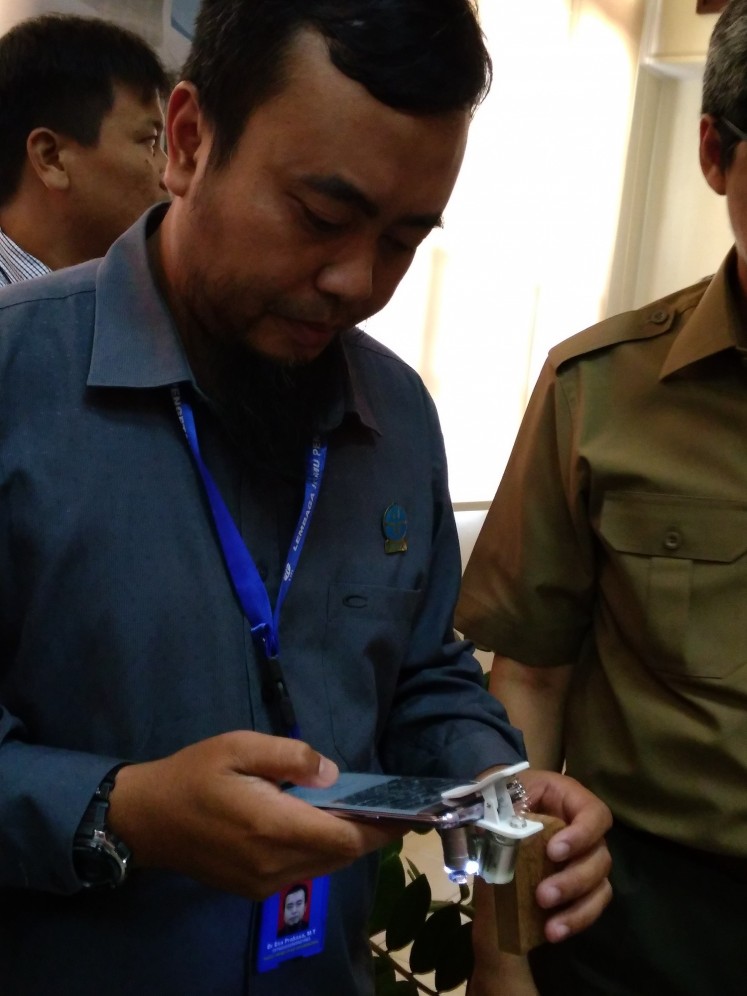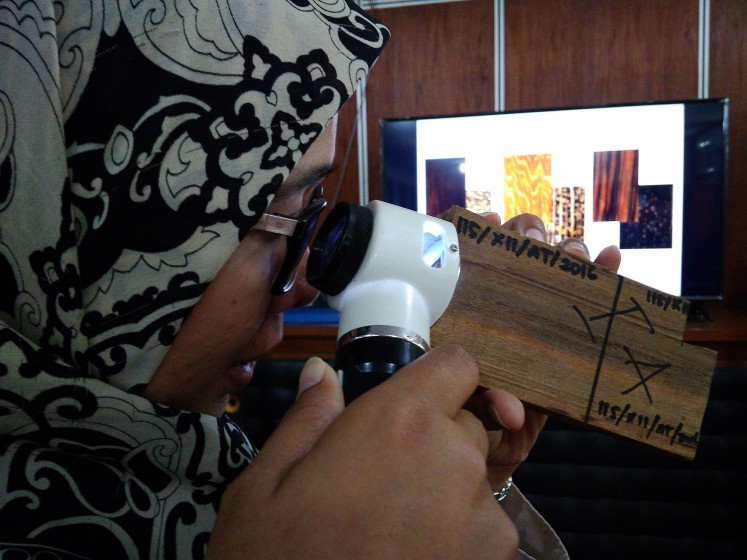Popular Reads
Top Results
Can't find what you're looking for?
View all search resultsPopular Reads
Top Results
Can't find what you're looking for?
View all search resultsMinistry to name Bogor's xylarium world's largest wood collection
On Sept. 23, the ministry will declare Xylarium Bogoriense as the xylarium with the largest collection in the world, with 185,647 specimens. The announcement will be made by President Joko “Jokowi” Widodo in Yogyakarta.
Change text size
Gift Premium Articles
to Anyone
With vast tropical forests and a rich variety of biological resources, Indonesia is also home to 4,000 types of wood.
For research and documentation purposes, wood specimens are collected in a xylarium, or a wood library. It is a building in which all types of wood are collected, recorded, treated and provided to specialists in forestry, botany and conservation, among other fields. They are also available for public perusal.
Wood specimens in Xylarium Bogoriensi, Bogor. (JP/Theresia Sufa)Dwi Sudharto, head of forest research and development in the Environment and Forestry Ministry, said that Xylarium Bogoriense had been included in the Index Xylarioum of the Institutional Wood Collection of the World since 1975, and also included in the Index Herbarium Indonesianum.
Xylarium Bogoriense is located at the Forest Resources Research and Development Center (P3HH) under the Environment and Forestry Ministry, in Bogor, West Java.
The Bogor Botanical Garden, and Samarinda in East Kalimantan and Yogyakarta also hold wood specimen collections.
In July, Xylarium Bogoriense was ranked fourth in the world with 67,864 samples of various woods (consisting of 110 families, 785 genera and 3,667 species). The Netherlands is in first place with 125,000 specimens, while the United States and Belgium are second and third with 105,000 and 69,000 specimens, respectively.
Along with the Research, Technology and Higher Education Ministry, the Indonesian Institute of Sciences (LIPI), universities, the wood industry and provincial administrations, the Environment and Forestry Ministry aims to make Xylarium Bogoriense the largest wood specimen collection in the world.
On Sept. 23, the ministry will declare Xylarium Bogoriense as the xylarium with the largest collection in the world, with 185,647 specimens. The announcement will be made by President Joko “Jokowi” Widodo in Yogyakarta.
The ministry also plans to launch a computer-based wood identification tool application, called AIKO. It is the result of collaboration between the ministry and LIPI, supported by the national innovation research incentive program at the Education Ministry.
Read also: Exploring Bogor Botanical Garden now easier thanks to mobile app
The tool shortens the wood-identification process; from one or two weeks if carried out manually to just one second with AIKO.
AIKO is expected to become an immense help in wood identifying and wood grouping in regard to trading, wood-related conflict resolutions and to wood conservation efforts.
LIPI researcher Esa Prakasa demonstrates identifying a wood specimen with the AIKO app. (JP/Theresia Sufa)“We hope this innovation will lead to other creations. We expect support and synergy from all parties to enrich the wood specimen collection as well as the Xylarium Bogoriense and AIKO data base,” Dwi Sudharto said.
Ratih Damayanti, wood quality and anatomy researcher from the P3HH, said that Indonesia held 40 types of perfect wood that are included in the first group of the world’s commercial wood.
“Wood is valued for its beauty. However, not all wood comes with a beautiful pattern. That is why there are classifications,” said Ratih.
Wood researcher Ratih Damayanti examines a wood specimen sample with a magnifying tool. (JP/Theresia Sufa)The first commercial wood group includes Crudia ripicola, Shorea atrinervosa and Hopea dyeri Heim. They are considered highly beautiful, strong and long-lasting.
The second group includes Durio griffithii, Diospyros papuana Valeton ex Bakh and Parashorea lucida. They are deemed less beautiful than the first group, but durable and solid nonetheless.
The third commercial wood group includes Diospyros siamang Bakh, Dyospyros hassetii Zoll and Mangifera gedebe, which are considered the lowest in quality. (wng)














